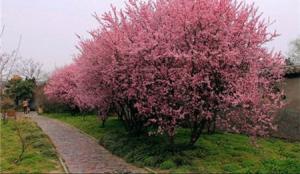1、 Curing method
1. Substrate selection: sandy loam with good drainage, fertility and looseness and more organic matter can be selected for potting. Chicken and duck manure or cake fertilizer can be appropriately added as base fertilizer before potting, which is conducive to its growth

2. Light management: it likes an environment with sufficient light. It's best to plant it in a sunny place. It should be given sunshine as much as possible at ordinary times. When it's hot in summer, it's best to put it in a bright and well ventilated environment for maintenance

3. If the pot is too wet, it is not easy to keep the soil wet during flowering or waterlogging. If the pot is not watered properly, it is not easy to keep the soil wet, and it is not easy to bear fruit. Pay attention to drainage at ordinary times and avoid ponding in the basin

4. Temperature management: it likes warmth and can grow well under the temperature of 18 ℃ - 25 ℃. In winter, it should keep the room temperature above 5 ℃ to help it survive the winter safely

2、 Breeding skills
1. Breeding method: its breeding method is mainly sowing method. The sowing method can be sown in indoor pots. Under the temperature of 10 ℃ - 15 ℃, seedlings can germinate and grow new plants. For young plants, attention should be paid to taking warm and cold proof measures, which is conducive to their safe overwintering

2. Flower promotion method: when the plant grows to about 10 cm high, it can pick the heart once or twice, which can effectively inhibit the overgrowth of its main shoot and consume nutrients. At the same time, it should try to maintain a high room temperature, strengthen water and fertilizer management, and promote its branch growth, flowering and fruiting

3、 Problem diagnosis and treatment
1. Rotten roots: the potted plants are limited by containers. Once the water is not controlled properly, it is easy to cause rotten roots of plants due to excessive waterlogging. Therefore, when breeding, we must choose flower pots with appropriate size, and pay attention to water and fertilizer management. Neither too much water nor fertilizer can be used to avoid rotten roots caused by excessive waterlogging or fertilizer damage

2. Pests: its pests are mainly aphids. Once found, it should be sprayed with insecticides in a timely and reasonable manner according to the instructions

4、 Other issues
1. Toxicity: Although the root of the plant can be used as medicine, it itself is toxic. Do not directly treat diseases with its plant. Take medicine according to the doctor's advice. At ordinary times, pay attention not to let children or pets eat it by mistake

2. Moral: it has a very optimistic and upward beautiful flower language, which is that tomorrow will be happy. People are keen to appreciate its red fruits in autumn and winter, and call it "jiqingguo"


 how many times do yo...
how many times do yo... how many planted tre...
how many planted tre... how many pine trees ...
how many pine trees ... how many pecan trees...
how many pecan trees... how many plants comp...
how many plants comp... how many plants can ...
how many plants can ... how many plants and ...
how many plants and ... how many pepper plan...
how many pepper plan...





























